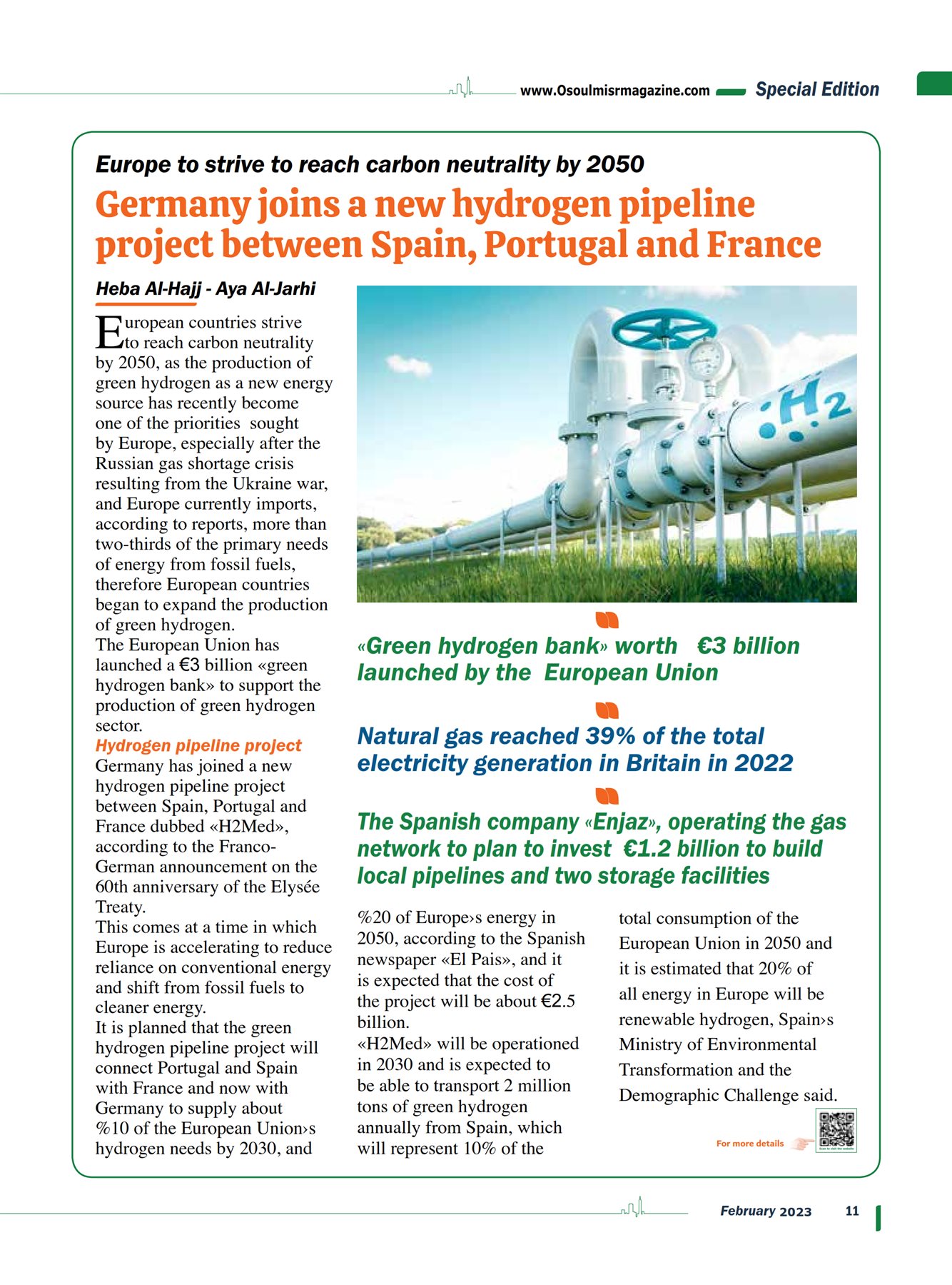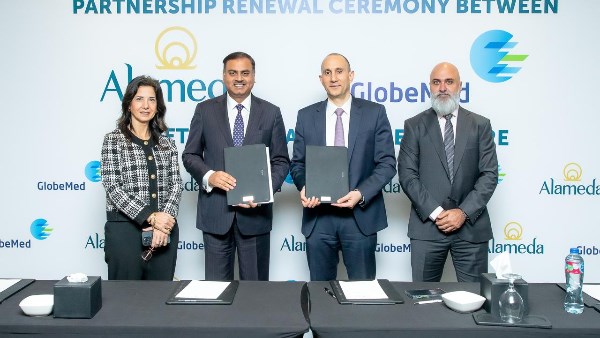Europe to strive to reach carbon neutrality by 2050
Germany joins a new hydrogen pipeline project between Spain، Portugal and France

European countries strive to reach carbon neutrality by 2050، as the production of green hydrogen as a new energy source has recently become one of the priorities sought by Europe، especially after the Russian gas shortage crisis resulting from the Ukraine war، and Europe currently imports، according to reports، more than two-thirds of the primary needs of energy from fossil fuels، therefore European countries began to expand the production of green hydrogen.

The European Union has launched a €3 billion "green hydrogen bank" to support the production of green hydrogen sector.
Hydrogen pipeline project
Germany has joined a new hydrogen pipeline project between Spain، Portugal and France dubbed "H2Med"، according to the Franco-German announcement on the 60th anniversary of the Elysée Treaty.
"Green hydrogen bank" worth €3 billion launched by the European Union
This comes at a time in which Europe is accelerating to reduce reliance on conventional energy and shift from fossil fuels to cleaner energy.
It is planned that the green hydrogen pipeline project will connect Portugal and Spain with France and now with Germany to supply about %10 of the European Union's hydrogen needs by 2030، and %20 of Europe's energy in 2050، according to the Spanish newspaper "El Pais"، and it is expected that the cost of the project will be about €2.5 billion.
"H2Med" will be operated in 2030 and is expected to be able to transport 2 million tons of green hydrogen annually from Spain، which will represent 10% of the total consumption of the European Union in 2050 and it is estimated that 20% of all energy in Europe will be renewable hydrogen، Spain's Ministry of Environmental Transformation and the Demographic Challenge said.
France and Spain
The Spanish company "Enjaz"، operating the gas network to plan to invest €1.2 billion to build local pipelines and two storage facilities
Emmanuel Macron، the President of France، announced that there is a will to provide energy in the context of searching for alternatives to polluting energy sources.
Artur Gonzalo Isbery، CEO of the Spanish company "Enjaz"، which operates the gas network، stated، about the Spanish plans of hydrogen، that it is planned to invest €3.5 billion and about €1.2 billion to build local pipelines and two storage facilities.
Germany and Britain
Natural gas reached 39% of the total electricity generation in Britain in 2022
Germany is moving at an accelerated pace to implement renewable energy projects to convert to clean fuels، including the offshore wind farms project، where the German Federal Network Agency plans to offer 4 tenders related to offshore wind farms in areas in the North and Baltic seas، with a combined capacity of 7 gigawatts، to develop the technology of mixing hydrogen with natural gas in Germany، and to expand the scope of using this mixture in heating homes.
Britain is increasing the rate of electricity generated by gas and wind، as the rate of using natural gas to generate electricity in Britain reached last year its highest level in 3 years، while the demand for electricity production and export in the country jumped، and natural gas accounted for nearly 39% of the total electricity generation in Britain in 2022، compared to 38% in 2021 and 35% in 2020، supported by the decline in Britain's electricity imports، which represented only 5.5% of the country's total electricity in 2022، down from 10.3% in 2021.
The United Kingdom set a record for generating electricity from wind energy، as Britain aims to reach carbon neutrality by 2050، which requires a significant expansion of electricity generation from renewable sources such as wind and solar energy.
Britain is heading towards building underground hydrogen tanks where Gravitricity، the British energy storage co. and the infrastructure construction co."VSL Systems UK"، signed a memorandum of understanding to design and build hundreds of underground hydrogen tanks، which will provide a quarter of the hydrogen storage needs expected by the British government by 2050.









-1120252475029447.jpg)
-920252122624392.jpg)
















